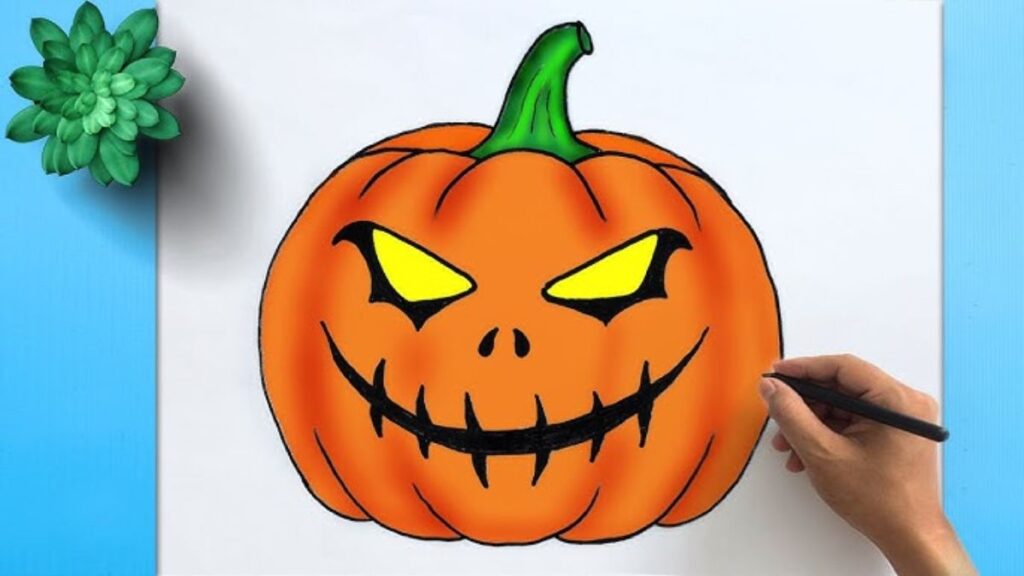Drawing pumpkins is a delightful skill that anyone can master with the right guidance. Whether you’re preparing for Halloween artwork or simply want to improve your drawing abilities, this comprehensive guide will walk you through everything you need to know about creating stunning pumpkin illustrations.
Getting Started: Essential Materials
Before diving into our drawing:6ya5lsy38aw= pumpkin tutorial, gather these basic supplies:
- Drawing paper (preferably medium texture)
- Pencils (2H, HB, and 2B)
- Eraser
- Colored pencils or markers (optional)
- Reference photos of pumpkins
Understanding Pumpkin Anatomy
To create realistic pumpkin drawings, it’s essential to understand their structure:
- Main Body Shape
- Generally spherical or oval
- Slightly flattened at top and bottom
- Vertical ridges (typically 5-10)
- Stem Characteristics
- Usually thick at base, tapering upward
- Often curved or bent
- Rough, woody texture
- Surface Details
- Deep grooves between segments
- Subtle texture variations
- Color variations from green to orange
Basic Pumpkin Drawing Tutorial [drawing:6ya5lsy38aw= pumpkin]
Step 1: Basic Shape Construction
- Draw a large circle or oval
- Flatten slightly at top and bottom
- Mark the center line vertically
- Add guidelines for segments
Step 2: Adding Structure
- Draw the stem
- Sketch segment lines
- Define the bottom curve
- Add basic shading guidelines
Step 3: Detail Development
- Enhance segment definition
- Add texture details
- Develop stem characteristics
- Create shadow patterns
Advanced Techniques
Creating Realistic Texture
- Use cross-hatching for shadow areas
- Implement stippling for subtle texture
- Layer light and dark strokes
- Add irregular surface details
Mastering Light and Shadow
- Identify your light source
- Create consistent shadows
- Develop highlight areas
- Build depth through contrast
Special Effects and Variations
Jack-o’-Lantern Transformation
- Plan facial features
- Create carved effects
- Add internal glow
- Develop shadows around cuts
Seasonal Variations
- Fall harvest scenes
- Decorative arrangements
- Farm stand displays
- Halloween themes
Common Challenges and Solutions
Proportion Problems
- Use reference photos
- Start with basic shapes
- Check symmetry regularly
- Measure relative sizes
Texture Difficulties
- Practice different techniques
- Layer gradually
- Study real pumpkins
- Use various pencil pressures
Digital Drawing Applications
Software Recommendations
- Procreate
- Adobe Photoshop
- Krita
- Clip Studio Paint
Digital-Specific Techniques
- Layer management
- Brush selection
- Texture overlays
- Color theory application
Professional Tips and Tricks
Composition Guidelines
- Rule of thirds application
- Background integration
- Size variation
- Perspective choices
Color Theory
- Orange and green combinations
- Shadow color selection
- Highlight placement
- Ambient light effects
Project Ideas
Beginner Level
- Simple outline drawings
- Basic shaded pumpkins
- Single pumpkin studies
- Stem practice sketches
Intermediate Level
- Pumpkin patch scenes
- Multiple pumpkin arrangements
- Carved pumpkin designs
- Seasonal still life
Advanced Level
- Hyperrealistic renderings
- Complex lighting scenarios
- Mixed media projects
- Large-scale compositions
Teaching Others [drawing:6ya5lsy38aw= pumpkin]
Classroom Applications
- Age-appropriate exercises
- Group projects
- Skill development progression
- Assessment methods
Workshop Structure
- Basic shape introduction
- Texture development
- Shading techniques
- Advanced detail work
Frequently Asked Questions
What’s the best way to start drawing a pumpkin?
Start with a simple circle or oval shape, then gradually add the characteristic ridges and stem.
How do I make my pumpkin drawing look more realistic?
Focus on accurate proportions, careful shading, and detailed texture work. Study real pumpkins for reference.
What pencils work best for pumpkin drawing?
Use a combination of HB for outlines, 2H for light details, and 2B for darker shadows.
How can I improve my stem drawing?
Practice drawing curved, irregular shapes and pay attention to the stem’s texture and thickness variations.
Should I draw pumpkins from reference or memory?
Begin with references to understand proper structure, then practice drawing from memory as you improve.
How do I create the right texture for pumpkin skin?
Use a combination of light cross-hatching and stippling techniques to create the subtle texture variations.
What’s the secret to drawing good pumpkin segments?
Space your segments evenly and ensure they curve naturally from top to bottom.
How do I choose the right colors for my pumpkin drawing?
Start with a base orange and add variations of yellow and brown for depth and realism.
What’s the best way to draw pumpkin shadows?
Identify your light source first, then gradually build up shadows using layered shading techniques.
How can I make my drawing:6ya5lsy38aw= pumpkin unique?
Experiment with different perspectives, sizes, and arrangements while maintaining basic structural accuracy.
Conclusion
Mastering the art of drawing pumpkins takes practice and patience. By following this comprehensive guide [drawing:6ya5lsy38aw= pumpkin], you’ll develop the skills needed to create stunning pumpkin artwork. Remember to start with basic shapes, focus on accurate proportions, and gradually build up details and texture. Whether you’re a beginner or advanced artist, these techniques will help you create beautiful pumpkin drawings that capture the essence of this iconic fall symbol.
Keep practicing, experimenting with different techniques, and most importantly, enjoy the creative process. Your pumpkin drawing skills will improve with each attempt, leading to increasingly impressive results.


